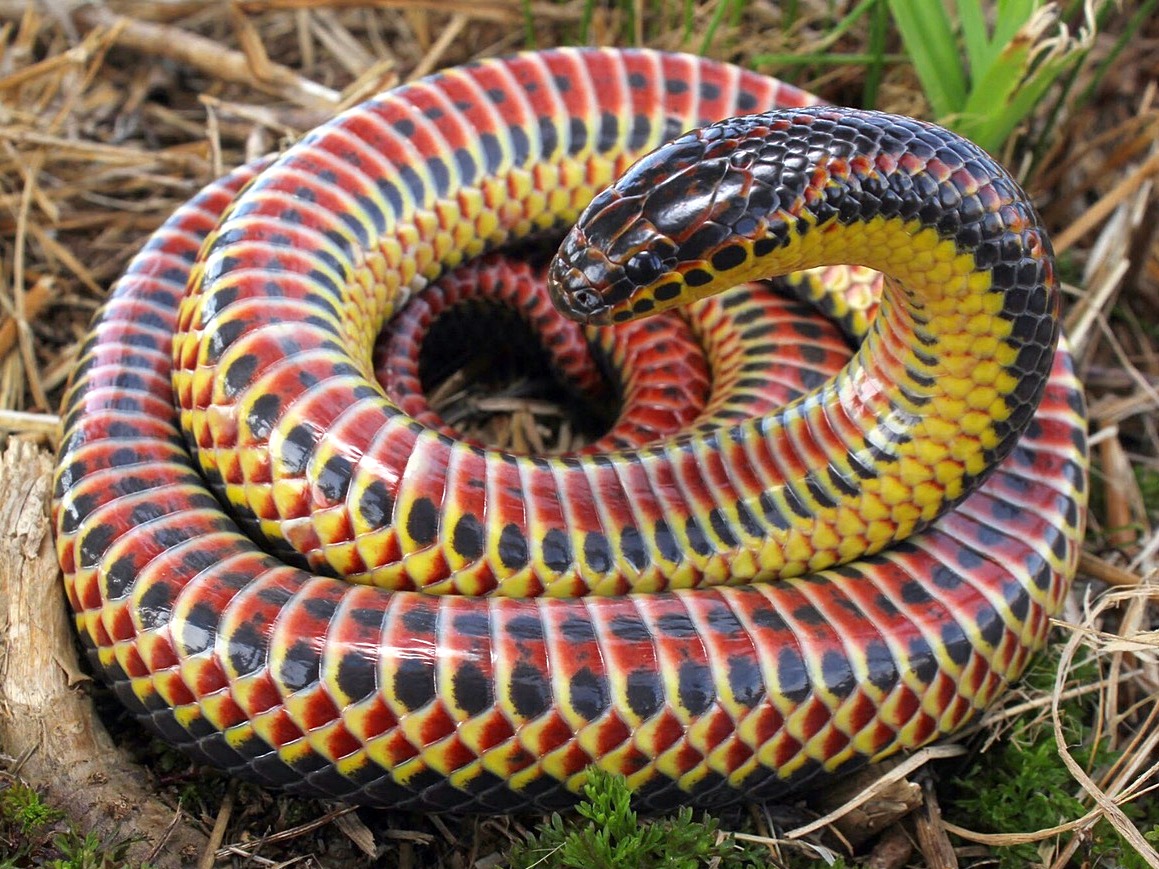Rainbow snake
(Farancia erytrogramma)

Description
Farancia erytrogramma (also known commonly as the rainbow snake, and less frequently as the eel moccasin) is a species of large, nonvenomous, highly aquatic, colubrid snake, which is endemic to coastal plains of the southeastern United States. Two subspecies are recognized as being valid, one of which has been declared extinct. Dorsally, rainbow snakes have smooth, glossy bluish-black back scales, with three red stripes. They have short tails, with a spiny tip which they sometimes use as a probe. Adults may show yellow coloration along the sides and on the head. They usually grow to a total length (including tail) of 36-48 inches (91–122 cm), although some specimens have been recorded up to 66 inches (168 cm) in total length. Females are larger than males. Rainbow snakes are found in aquatic habitats ranging from cypress swamps and marshes to blackwater creeks, slow-moving streams, and sandy coastal plain. F. erytrogramma is found from southern Maryland to southeastern Louisiana, including eastern Virginia, southeastern North Carolina, South Carolina, Georgia, northern Florida, Alabama, and Mississippi. A small population once inhabited the Lake Okeechobee region in southern Florida, but was declared extinct on October 5, 2011. One was seen at the Ocala National Forest, in Marion County, in early 2020 and the sighting was confirmed by the National Museum of Florida as the first in 50 years at this location.
Taxonomic tree:







